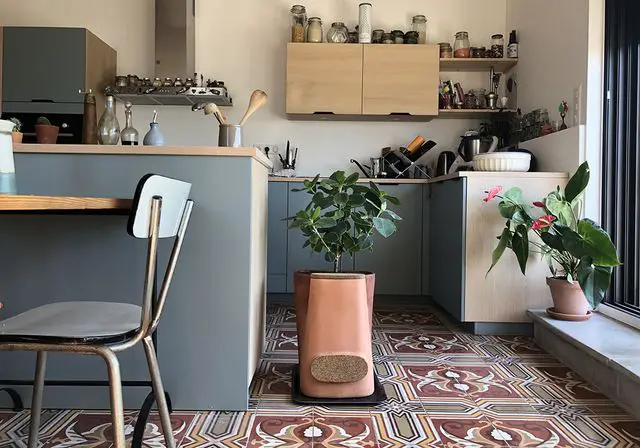Updated on March 24, 2023 at 3:24 p.m.
© Press
If we realized that we had to reduce plastic and packaging as much as possible, it is more difficult to reduce our household waste on a daily basis. One of the solutions would be to think about composting. And yes, because even in an urban environment, collectively or individually, it is possible to cross this course. And you will see, it is very easy.
The composter is no longer the prerogative of gardens. With our desires for a green house and waste reduction, making your own compost can be a good idea. We can also reduce the use of plastic film and other aluminum foil by starting to make bee wraps or recycle our used clothes by braiding tawahi sponges. But for household waste, using a composter is the most suitable green gesture. It allows us to harvest a 100% natural fertilizer and a very effective fertilizer for our plants and aromatics, while reducing the use of soil and water. We forget our preconceptions and our fears. Indeed, there is no longer any need to raise nibbling earthworms to obtain compost. You just need to follow a few simple rules for optimal results. And good news, the composter also knows how to be ultra-decorative.
How to compost at home?
Composting at home is child’s play whether you have an exterior or not. If you have a garden, three options are available to you: the traditional pile of leaves, compost placed directly at the foot of the plants or the dedicated bin. In apartments, the composter will be our only ally in our ecological quest. But to get a rich humus, we must start by chopping our leftovers into small pieces. Indeed, the smaller they are, the faster the decomposition will take place. Then, care is taken to respect a good balance between dry elements (cardboard packaging, paper, eggshells, etc.) and wet elements (peelings, flowers, leftover meals) which will prevent the appearance of bad odors or gnats. Finally, we think of mixing it regularly, once a week, to aerate it and help fermentation. And to know if your compost is ready, it must smell like the forest or the undergrowth and crumble easily like compost. This can take several weeks to several months depending on the method used and the size of the container.
Little trick, to speed up the process, you can add a little nettles or your old compost to stimulate the new one. As you would with your sourdough or homemade yogurts. Be careful, however, not to put everything and anything in your bin.
What should I put in my composter?
It will be understood, for a successful compost, you need a clever mix of wet and dry waste. It is estimated on average that it needs 60 to 70% wet residues (also called “green”) and 30 to 40% dry matter (called “browns”). The wet category includes everything that is peelings or leftover fruit and vegetables, fresh or wilted flowers, grass and even tea bags that have had their staples removed. We can also put, in small doses, our leftover meals. However, be careful not to confuse compost with trash. Indeed, certain foods such as meat or fish can attract animals and pests. Citrus peels, which are too acidic, or avocado or pineapple skins, which are too hard, should be prohibited.
On the dry waste side, the list is much more surprising. There are crushed eggshells or dried fruit shells, coffee grounds but also anything that will be made of unprinted paper or cardboard. Paper towels, raw packaging, handkerchiefs and paper towels will therefore mix with our food waste provided they are reduced to very small pieces.
Exit litter, cigarette butts, charcoal or barbecue, seeds that can germinate or vacuum cleaner dust and any other non-biodegradable element.
What is the ideal composter to equip my kitchen?
The choice of the kitchen composter will depend on the number of people who make up our tribe and the space we will be able to give it. Indeed, size and practicality are two factors to take into account to avoid seeing it being relegated to the back of a closet. Don’t forget either that compost ferments and that to guard against the odors it may give off, a good filter is essential. To remedy this, you can opt for the vermicomposter, which avoids fermentation and strong scents. Other advantages: the compost no longer needs to be turned and its decomposition will take place more quickly. Avoid throwing in garlic, citrus fruits, dairy products or ready meals. However, it is possible to recycle your germinated garlic or many fruits and vegetables by making it grow back by creating a perpetual vegetable garden.
And for those who are wondering, no, the little earthworms (eisenia andrei) will not go for a walk all over the apartment. Be sure.
Which composter should I choose to recycle waste from my balcony?
If you are lucky enough to have a small balcony or terrace, why not provide a place to install a composter? It should be placed in the shade and sheltered from wind and rain to regulate its humidity level. If you opt for the vermicomposter version, pay attention to the temperature. Heat below 0°C or above 40°C will be harmful to worms. In all cases, we prefer 15° to 25°C maximum and a tight seal. And as for the kitchen composter, its choice depends on the size of our family.

